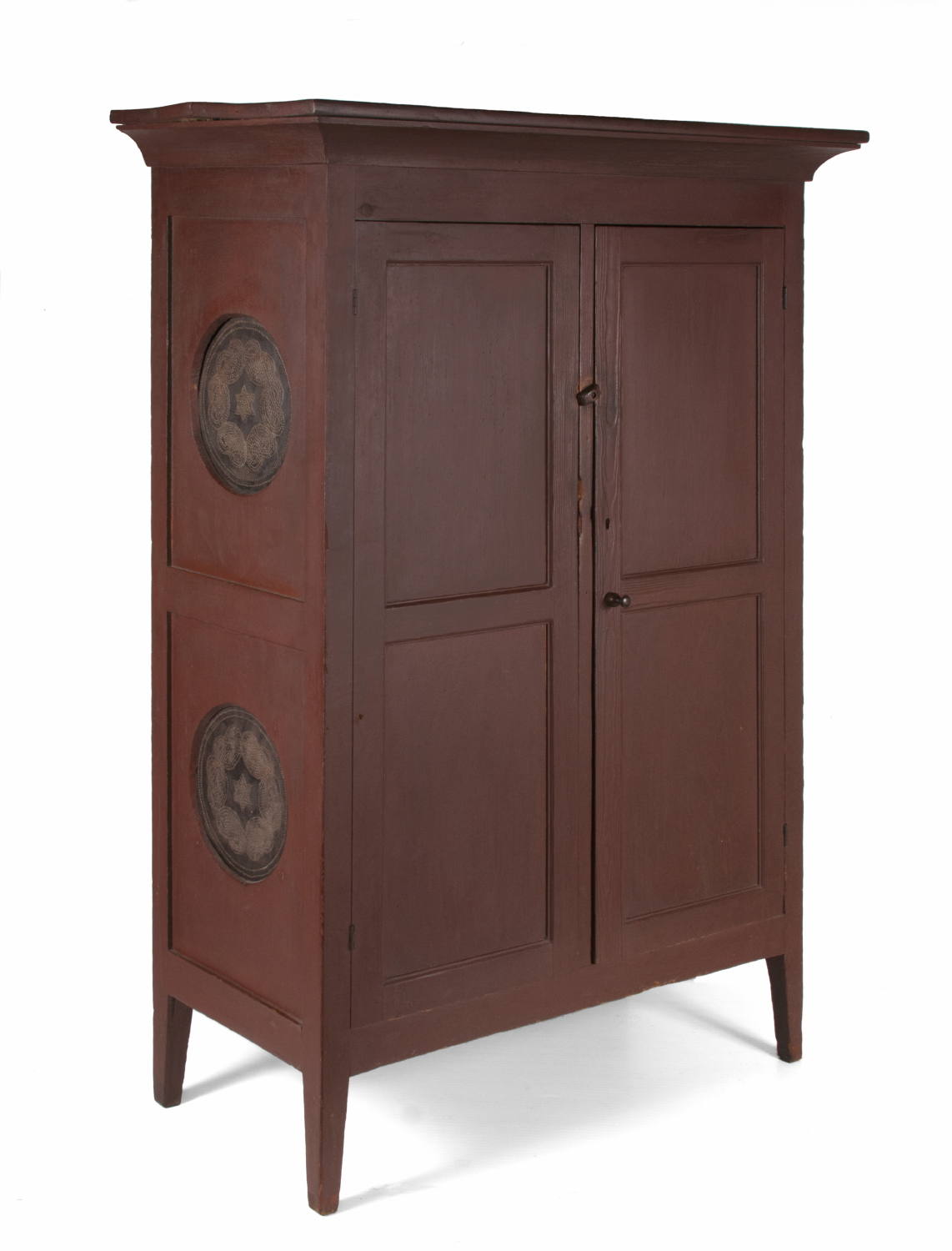
| |
WYTHE COUNTY, VIRGINIA PIE SAFE WITH ITS ORIGINAL, OXBLOOD RED PAINT AND CIRCULAR TINS BEARING WREATHS OF PRETZELS AROUND 6-POINTED STARS; AN ESPECIALLY EARLY EXAMPLE, FROM THE MOST DESIRABLE GEOGRAPHIC LOCATION OF THE FORM, CA 1820-1830 |
| |
|
| Dimensions (inches): |
68.5" tall x 48.25" wide x 20" deep |
| Description: |
|
Across the entire region in which American, paint-decorated pie safes were made during the 19th century, Wythe County, Virginia has been the source of the most venerable group of examples, treasured by collectors of the form. With its wide, scooped cornice and beautiful, clean, country Hepplewhite lines, this particular safe is a stand-out among its counterparts. Especially early, dating to the 1820's or 30's, with two, recessed paneled doors, the mirror image, paneled sides are punctuated by circular tins. Each of these has punched designs centered on a 6-pointed star, surrounded by what at first glance appear to be heart-like shapes. On close inspection, however, these are instead revealed to be pretzels, a remarkable image to encounter on any early American object.
While I am certain that I am probably not looking in the correct places, I can say that in 30 years of buying and selling American antiques, I don't recall ever having seen a pretzel among the imagery of a 19th century piece of American folk art. Though they have existed for hundreds of years, illustrated as early as 610 A.D., and while they seem like a reasonable enough thing to expect to appear on something of Germanic origin, the design is anything but common. Past a large, wooden trade sign of unknown origin, stripped of its paint and very difficult to positively date--the only pretzel-related items I know of are 20th century.
Made entirely of yellow pine throughout, the expertly constructed case is mortised and wooden pegged. The cornice is affixed with cut nails, driven in such a way that the top row of them, quite curiously, also apply the flat, plank top (ideal for the display of stoneware, etc,). The shelves on the interior are applied with early nails as well, some of which are roseheaded. Even the back is beautifully done, with two, wide, chamfered, raised panels. The elongated, mushroom knob, with its bulbous base, is original.
The oxblood red paint, which one might almost call tomato red, is original, very attractive, and the surface is collector grade. This is simply as good as early paint gets.
Condition: The right, rear foot experienced some degradation from rot. Approximately 80-85% of the wood is present. This is undergoing minor restoration so that it is solid. |
|
|
| |
|
| Primary Color: |
red |
|
| Earliest Date: |
1820 |
|
| Latest Date: |
1830 |
|
| For Sale Status: |
Sold |
|
| Price |
SOLD |
|
| E-mail: |
info@jeffbridgman.com |
|
 |
|
Page Views:... 3602 |
|


